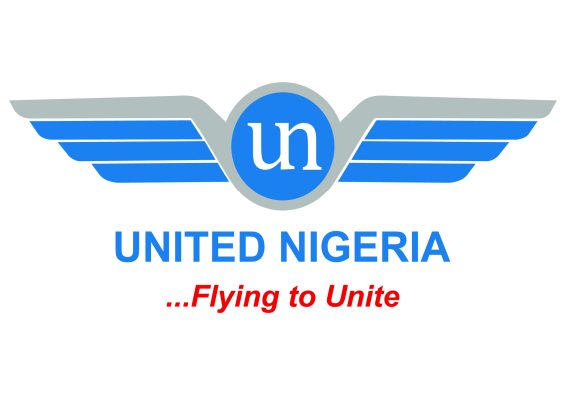Revealed: Poor crew management responsible for Agagu plane crash

* Pilot should have aborted take – off – AIB
* Faults NCAA’s oversight duties
The Accident Investigation Bureau (AIB) on Wednesday attributed poor co- ordination between the two pilots that operated the ill -fated Associated Aviation airline on October 3, 2013 as the cause of the crash, saying the crew failed to implement principles of crew resource management.
The Associated Aviation Embraer 120 aircraft with 20 passengers on board was conveying the remains of former Ondo State Governor Olusegun Agagu for burial in Akure when the plane crashed, killing many passengers.
The AIB, while releasing the final accident report, said the pilots should have aborted take – off of the aircraft following indications from the aircraft that some components were not properly activated.
Besides, the failings of the crew, the AIB also faulted poor regulatory oversight duties by the Nigerian Civil Aviation Authority (NCAA) as another causal factor for the crash.
Speaking on Wednesday at a briefing in Lagos, the AIB Commissioner and Chief Executive Officer, Akin Olateru, apologised for the delay in the release of the accidents reports, saying probe of air accidents is not to indict any agency but to avoid reoccurrence.
Besides, the Associated Aviation crash report, the AIB also released five final reports involving Bristow Helicopters, NCAT trainer aircraft, Westlink Aviation and NAHCO loader and AeroContractors Aircraft.
Olateru said since January 2017, the AIB has released 16 accident reports.
The Accident Investigation Bureau said the six final accident and serious incident reports occurred in the Nigeria aviation industry between 2009 and 2014.
Among the six reports released were two accidents and four serious incidents.
Another accident report released was that of Westlink Airlines Limited Piper Aztec 23-250 aircraft with the registration number 5N-BGZ, which occurred at Matseri Village,Bunza Local Government Area of Kebbi State on August 11, 2014.
The serious incidents were Aero Contractor’s DHC-8-400 aircraft incident with registration 5N-BPT, with the Nigerian Aviation Handling Company (NAHCO) baggage loader on April 29, 2014 and another incident involving two Bristow Helicopters aircraft, Bell 412 helicopters with Registration numbers 5N-BGS, and 5N-BDD, at the Addax Base Helipad, Calabar, Cross River State, Nigeria on 12th November, 2009.
Also covered were the serious incidents involving two aircraft belonging to Nigerian College of Aviation Technology (NCAT). They were the Tampico Club TB9 with the registration number 5N-CBE, which serious incident occurred at Zaria Aerodrome, Kaduna State on October 4, 2012 and another serious incident involving Tampico TB–9 Aircraft with registration number 5N-CBI that occurred at the same Zaria Aerodrome on May 23, 2012.
The report on the Associated Aviation airline crash cited as its causal factor the decision of the crew to continue the take-off despite the abnormal number two Propeller indication warning and the low altitude stall as a result of low thrust at start of roll for take-off from number two engine caused by an undetermined malfunction of the propeller control unit.
On the contributory factor, the AIB’s release fingered the aircraft being rotated before attaining Vector One the decision to continue the take-off with flap configuration warning and auto-feather warning at low speed, poor professional conduct of the flight crew, inadequate application of Crew Resource Management (CRM) principles, poor company culture and inadequate regulatory oversight.
AIB released four safety recommendations on the crash and were directed at the NCAA.
AIB called on NCAA to enhance the enforcement of the regulations with regards to the implementation of operators approved personnel training programme and intensification of its safety oversight function on the airline to ensure that flight operations were carried out in accordance with approved operations manuals in line with the provisions of Nigeria Civil Aviation Regulations (NCARs).
Other highlights of the recommendations were improved safety oversight on the affected carrier to ensure staff welfare issues, and that remunerations were settled promptly and the establishment of Confidential Voluntary Reporting System, which must be implemented in line with the State Safety Program.
On the two Bristow Helicopters serious incidents at the Addax Base Helipad, Calabar in Cross River State on November 12, 2009, like Associated Airways, the bureau also made four safety recommendations.
AIB recommended that the regulatory agency should ensure that Calabar Base Helipad Manual of APDNL be reviewed to comply with Nigeria Civil Aviation Regulations (NCARs), APDNL should ensure that helicopters are properly parked in designated locations, APDNL should ensure that Helicopter Landing Officers (HLOs) are always present during aircraft operations and the agency should ensure that helicopter flight operations at the Helipad were done in accordance with Nig. CARs.
AIB in the report, however, stated that NCAA responded to the safety recommendations of the bureau and implemented them.
On the Aero Contractors incident with NAHCO aviance baggage loader vehicle fleet L3-23 and a parked Bombardier DHC-8-400 aircraft of Aero Contractors, AIB in its report said the NAHCO personnel who operated the baggage loader vehicle was neither employed to operate the vehicle, nor was he authorised to do so.
The report observed that the rostered driver of the baggage loader vehicle was not available at the time of the occurrence and cited the non-adherence to NAHCO Safe Operating Procedures by the Ramp manager as one of the contributory factors to the incident.
It also made four safety recommendations to NCAA, which included ‘strict adherence to NAHCO’s Standard Operating Procedures’ and ‘Air Operators’ Certificate (AOC) holders should determine the minimum number of personnel for airline ground handling operations to be deployed for each aircraft type.’
On the Westlink Airlines’ Piper Aztec 23-250 aircraft accident, AIB identified inadequate visual lookout and failure to avoid the obstacle by the pilots as the only causal factor responsible for the accident.
The contributory factors included less than adequate planning and preparation for the flight, inadequate pilot training and experience on agricultural aerial work and limited regulatory guidance and oversight on agricultural operations.
It also made four safety recommendations to NCAA in its report.
The report also included two NCAT serious incidents that occurred on May 23, 2012 and October 4, 2012 in Kaduna State, which generated eight safety recommendations.
Olateru said: “With 66 safety recommendations out of 147 and 16 reports out of 35 recorded from January 2017 to date, we have achieved 45 percent on our Safety Recommendation and 46 percent on publication of the accident and serious incident report.
“To ensure that our recommendations are effective and are getting the desired results and as you may be aware, we recently inaugurated a committee to review all safety recommendations issued by the Bureau since inception to measure the effectiveness of the safety recommendation. We look to publish the report of the exercise shortly.
“Reaching a total of 16 accident and serious incident reports in the last 15 months could only be made possible by the tremendous effort of our member of staff who continuously have sleepless night in ensuring that we clear the backlog, the support of the supervisory ministry and particularly the Minister.
“Accident investigation and reporting is not an easy task especially when there are several laws/procedures/regulations that govern each investigation. When there is an occurrence, it is important to investigate and publish the findings of the occurrence promptly for avoidance and prevention.
“As we work assiduously to clear the backlog of reports, we are equally ensuring that new occurrences are resolved promptly.”








